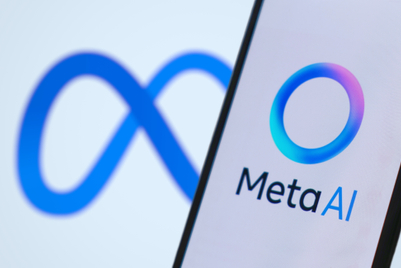
While Meta’s advertising business took a hit in 2022, dragging the social media giant into revenue decline for the first time in its 18-year history, its ad leader has unwavering optimism about the path ahead.
“Being an underdog, in my eyes, is actually a position of strength,” Nicola Mendelsohn, VP of Meta’s global business group, tells Campaign US.
Underdog might seem like an unusual word to describe a $117 billion business, per its most recent full-year 2022 revenue report, and the second-largest digital ad business in the U.S.
But Meta’s grip on the digital ad industry is waning while competitors like Amazon, Microsoft and TikTok climb up the ladder. Meta stock lost 65% of its value in 2022.
To appease investors, Meta co-founder and CEO Mark Zuckerberg announced plans to rein in costs and improve productivity during the company’s fourth quarter earnings release last week, describing 2023 as “the year of efficiency.” It was a positioning that sent its stock popping nearly 20% after the earnings call.
While efficiency is a frightening concept for employees and executives who are expected to do more with less resources, Mendelsohn says she has “never been more excited.”
“I had an all-hands this week with my team and I was reflecting with them on the fact that I've been at the company for almost a decade, and I've actually never been more excited than I am right now about the future, because I absolutely believe that our best days are ahead,” she says, speaking the day after Meta’s earnings update.
One example of where Mendelsohn is driving efficiency on her team is by bringing the product and engineering divisions closer together under chief operating officer Javier Olivan.
“The reason we did that was we wanted to get the insights from the sales and business teams who talk to advertisers as quickly as possible into the hands of the engineers who are building the product,” Mendelsohn says. “This is a massive step change for us. We're already starting to see the speed of decision making, how quickly we're getting products out, as one of the core outcomes of that decision.”
Protecting Meta’s culture of ‘fearlessness’
Meta has heralded a ‘move fast and break things’ culture since it was founded, which Mendelsohn has said in the past gives employees room to fail. But part of the company’s new efficiency drive will involve being more proactive about cutting underperforming projects, Zuckerberg said, suggesting a shift to safer bets.
Mendelsohn brushes off the suggestion.
“No, I don't think so. I don't think that they [efficiency and failure] can't be happy bedfellows, and certainly within a tech organization you have to fail in order that you progress and move on,” she says.
“What it means from an efficiency perspective is being more decisive, that if you're not seeing the returns coming you move quicker to stop it, rather than just watch it cycle after cycle not improving for whatever reason,” she adds.
Meta executives have been consistent in positioning the company’s efficiency drive as a positive development for staff, just months after it laid off 11,000 people.
Zuckerberg said he thinks the new, more efficient Meta will be “a more fun place for people to work because I think they're gonna get more stuff done.”
Chief financial officer Susan Li said during a follow-up call with investors last week that “things that create cost savings can also drive…a more vibrant and productive office culture.”
Employees must be nervous about Meta’s promise to “continue to streamline the company.” But Mendelsohn plans to protect morale during this period by encouraging her team to be “fearless,” a sentiment she relayed in their most recent all-hands meeting.
“I am more bullish than ever on what we can achieve because of the extraordinary people that we've got at the company,” she adds.
Using AI to drive ad efficiency
Mendelsohn is also focused on driving efficiency for advertisers by leaning more on artificial intelligence (AI) to power its tools and recommendations. For example, AI has significantly reduced the manual steps of ad creation in Meta’s Advantage+ products by automating up to 150 creative combinations within a single ad campaign.
“This is definitely an area you're going to see us double down on because, of course, growth and efficiency is top of mind for advertisers,” Mendelsohn says.
She says these investments drove over 20% more conversions for advertisers in Q4 vs. the prior year. Combined with declining cost per acquisition — with the average price per ad falling by 22% in the quarter — Mendelsohn says this resulted in higher returns on ad spend (ROAS).
This is not necessarily driving budget increases, though. Li said during the follow-up call that it historically takes advertisers time to respond to price fluctuations.
“I think that's particularly true in the current macroeconomic environment that we are in. Prices are still relatively weak, and you saw that in the CPM year-over-year trends that we disclosed,” Li said.
Ad impressions across Meta’s app increased by 23% in Q4.
Closing Reels monetization gap
A key focus for Mendelsohn is closing the monetization gap on Meta’s short video product, Reels, where usage is growing faster than ad revenue. In October, Zuckerberg said the Reels headwind was costing Meta more than $500 million in lost revenue per quarter.
Mendelsohn believes deploying teams to educate advertisers on best practices will help plug the gap, following the same playbook it adopted for its Stories format when it launched.
“For us, there's a job to be done with any of our new products in helping to explain to advertisers how to get the best out of the new format,” she says. “So we've been running things like Reels School in order to educate the advertisers, agencies and the ecosystem about what good looks like and what people respond to.”
Meta shared last week that over 40% of its advertisers have purchased Reels ads so far.
Li said Meta was “roughly on track” to abolish the Reels headwind “by the end of this year or early next year.”
‘We’ve been underestimated’
Despite revenue headwinds, user growth across Meta’s apps and products was promising in Q4. Facebook reached a milestone of 2 billion daily active users in December, while daily active users across Meta’s apps grew 4% to 3.74 billion.
Pointing to its user growth, Mendelsohn believes Meta has “been underestimated recently.”
“If you look at the people coming onto our platform it is healthy, it is growing and it's a big runway of opportunity for businesses as well,” she says.
Her challenge is matching the supply to demand.


.jpg&h=334&w=500&q=100&v=20250320&c=1)



.png&h=334&w=500&q=100&v=20250320&c=1)



.png&h=334&w=500&q=100&v=20250320&c=1)

.png&h=268&w=401&q=100&v=20250320&c=1)
.jpg&h=268&w=401&q=100&v=20250320&c=1)




.png&h=268&w=401&q=100&v=20250320&c=1)
